Low Power Mode: Managing Your Emotional and Creative Energy
Slides and speaker notes from a talk originally given at AlterConf in Portland on October 1, 2016.
October 02, 2016 • 3213 words • 11 minute read • Read on Medium
Also available as a video recording. Learn more about this talk.
Introduction
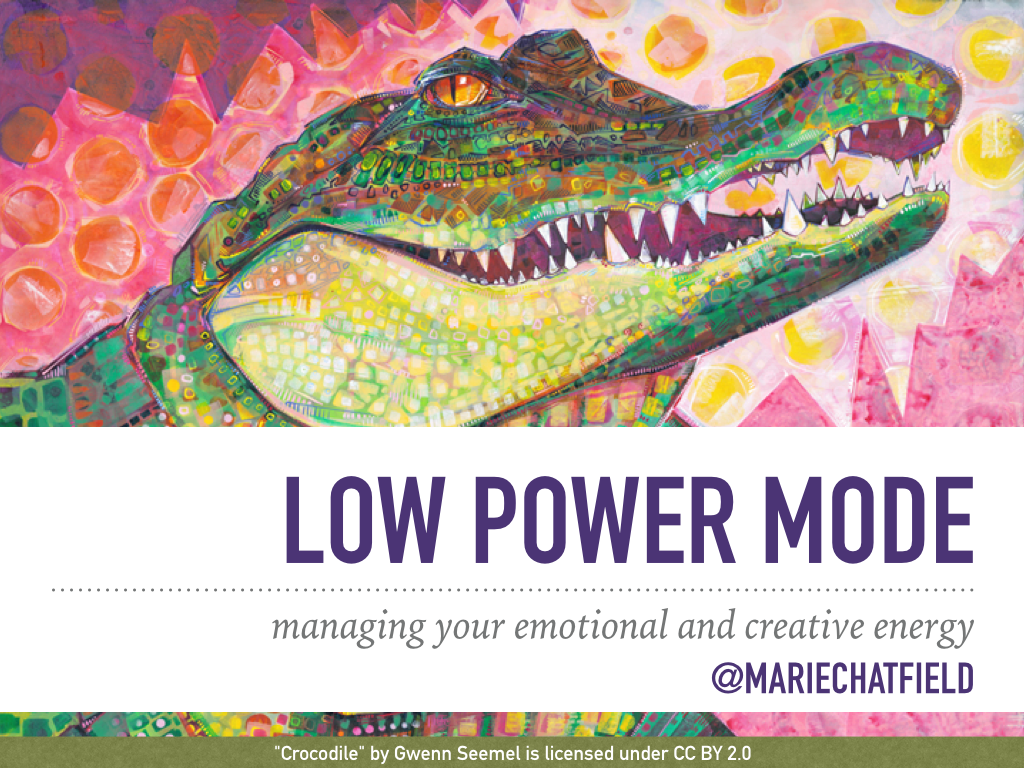
Low Power Mode: managing your emotional and creative energy. @mariechatfield // Art Credit: “Crocodile” by Gwenn Seemel, licensed under CC BY 2.0
Good afternoon! My name is Marie Chatfield, and I am so honored to be here with you today. I’m originally from Houston, and now live in San Francisco, where I work on a front-end infrastructure team at Square.
I’ve been a full-time software engineer for about a year and a half now, and I fully intend to stay in this industry for years to come — so I have a vested interest in making sure I don’t burn out. To that end, I’ve been thinking a lot about managing energy at work, and I’d like to share some of my thoughts with you in the next fifteen minutes.

Featuring the artwork of Gwenn Seemel, @gwennpaints, gweenseemel.com // Art Credit: “Sensual (After)” by Gwenn Seemel, licensed under CC BY 2.0
Before we go any further, I’d like to give a quick shoutout to the artist Gwenn Seemel, whose beautiful art is used throughout this talk. She has actually added all of her work to the public domain. You can find her on Twitter @gwennpaints or at gwennseemel.com if you’d like to see more of her work or support her!
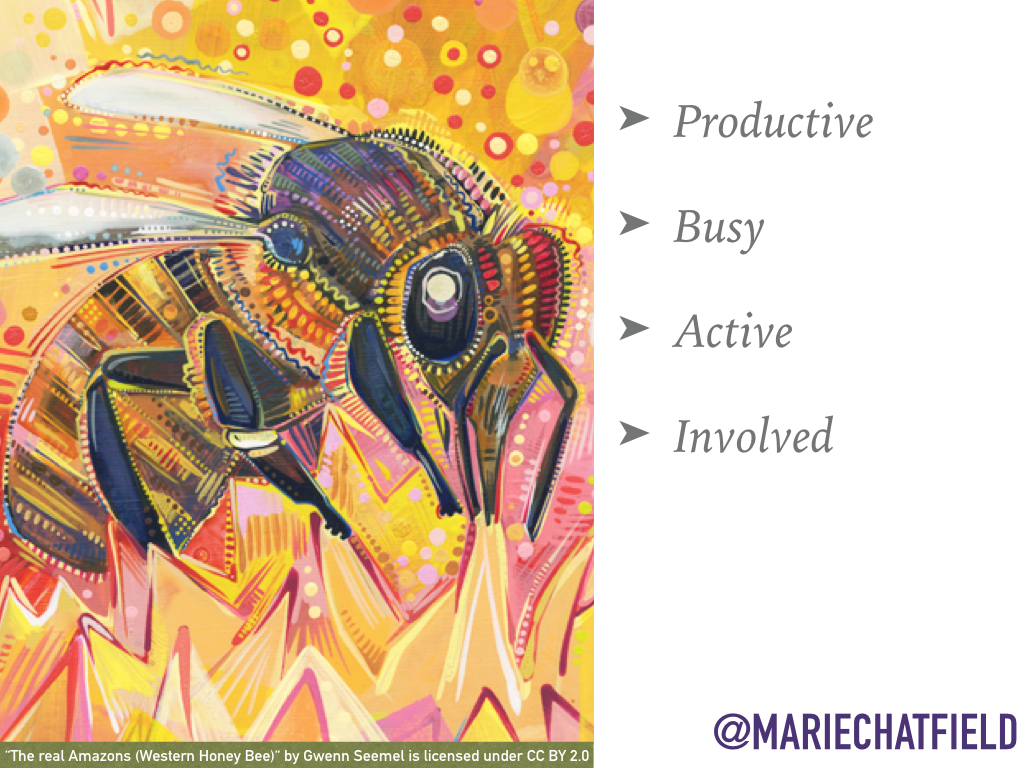
Productive, Busy, Active, Involved // Art Credit: “The real Amazons (Western Honey Bee)” by Gwenn Seemel, licensed under CC BY 2.0
When I first started working at Square, I joined a really amazing team of engineers working on interesting and challenging problems. Fresh out of university, I felt that there was so much I needed and wanted to learn, and I was in an environment where my questions were encouraged. I found a few communities at Square that I really cared about, including our Women in Engineering group, an a cappella group, and a boardgames night. I volunteered to meet with a middle school student every Tuesday during the fall semester through Square’s partnership with local non-profit Spark. I’d had some really interesting conversations about using my privilege to be a better ally, and I started an internally crowdsourced list of tangible ways to be an ally — and then worked on a Chrome extension side project that would remind you to be an ally.
I was firing on all cylinders, and I loved it — I was shipping code, organizing events, and giving back to causes I was passionate about.
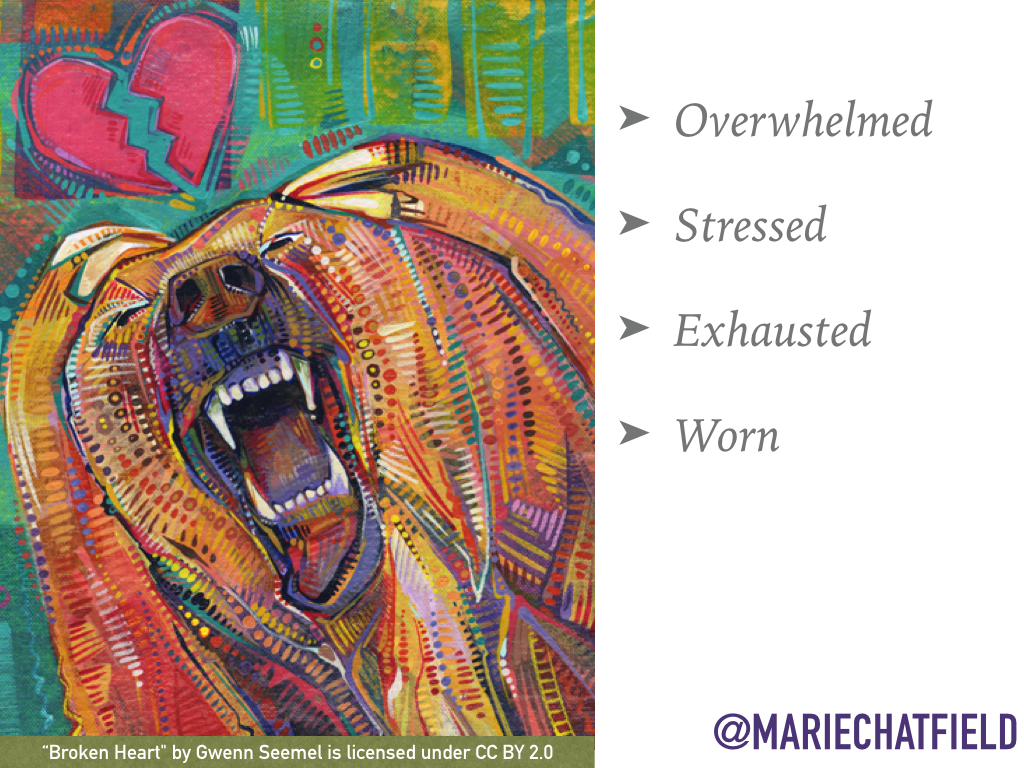
Overwhelmed, Stressed, Exhausted, Worn // Art Credit: “Broken Heart” by Gwenn Seemel, licensed under CC BY 2.0
It wasn’t long before I realized that, although all my efforts were worthwhile, I was giving too much of myself away. I was leaving work feeling exhausted and worn. I was working at a pace that wouldn’t be sustainable for the life-long career I’d envisioned for myself.
I quickly began to learn that work-life balance is more than just the breakdown of work versus personal time on your calendar, but about the quantity and quantity of energy you exert in different areas of your life.
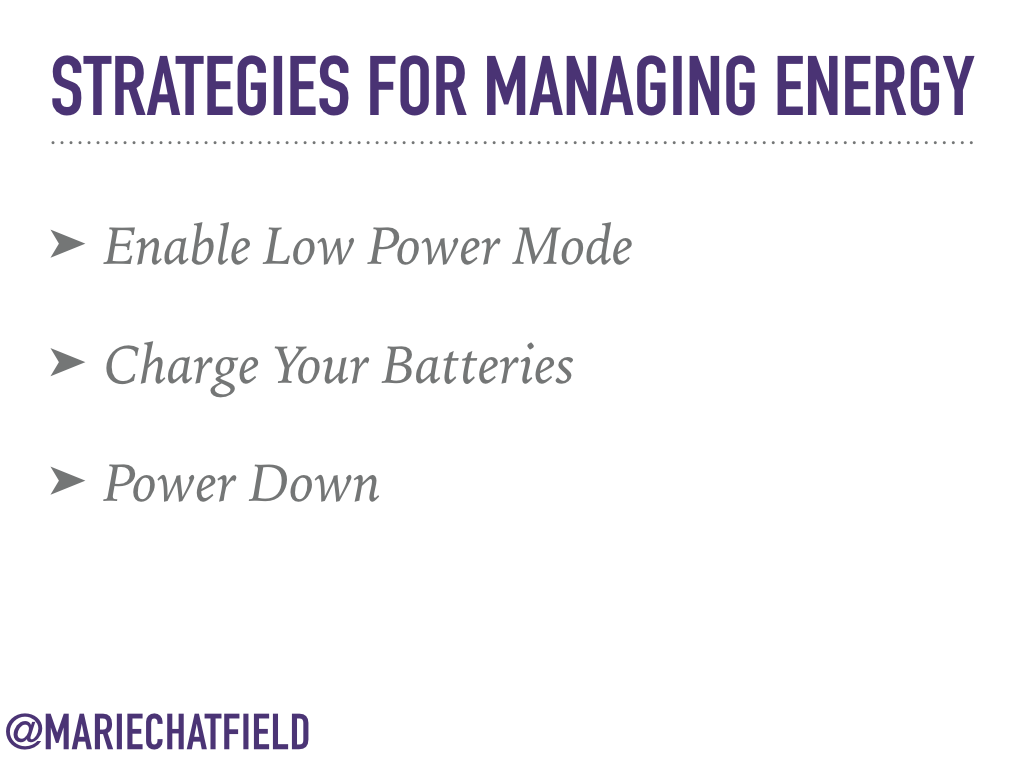
Strategies for Managing Energy: Enable Low Power Mode, Charge Your Batteries, Power Down
If my story resonates with you and your experience at all, I would love to share some of the strategies that I’ve learned for managing my energy at work. I’ve organized the strategies into three general categories.
As an occasional poet, I love a good extended metaphor. So today, we’re going to consider the ways that we are like smartphones — we are incredibly powerful, but we have a limited amount of energy which takes time to replenish.
We’ll talk first about what it means to enable low power mode, then how to charge your batteries, and finally the importance of powering down every now and then.
Disclaimer Time
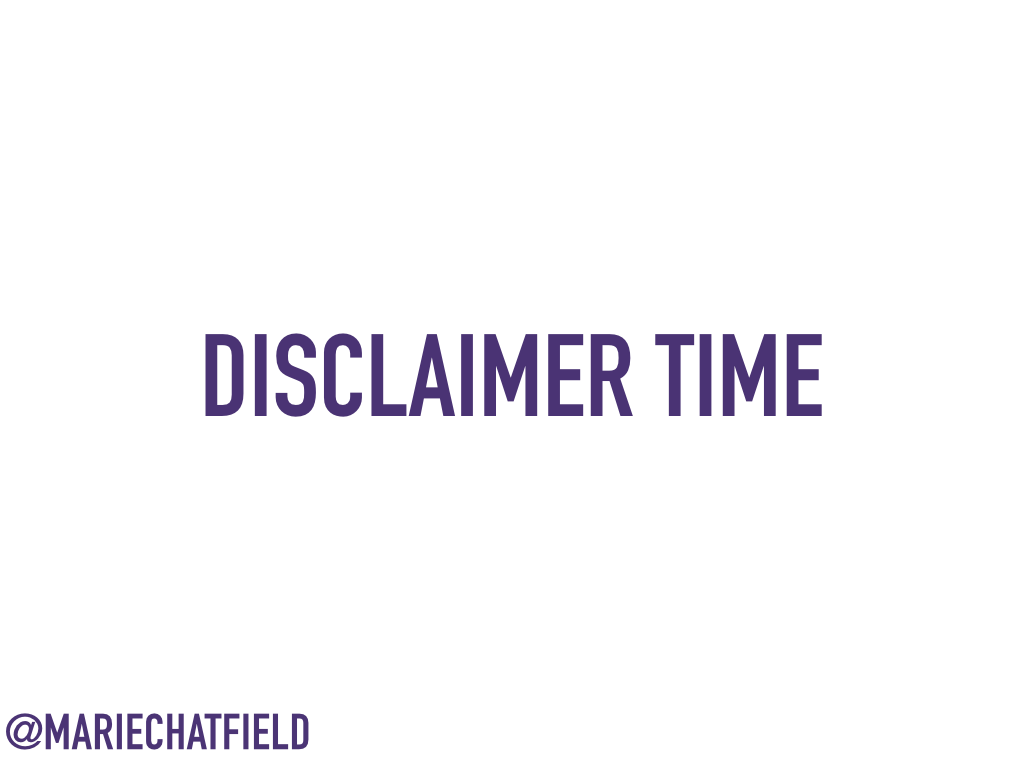
Disclaimer Time
As a disclaimer, not all of the techniques that work for me will work for you, especially if you do not have a manager or team which respects the boundaries you set on your energy and time, even more so if you are already marginalized in tech.
If you are a manager or leader, please do all that you can to create a culture where your employees feel empowered to set and enforce boundaries. You can do this by leading by example and by not penalizing employees who do introduce limits.
Enable Low Power Mode
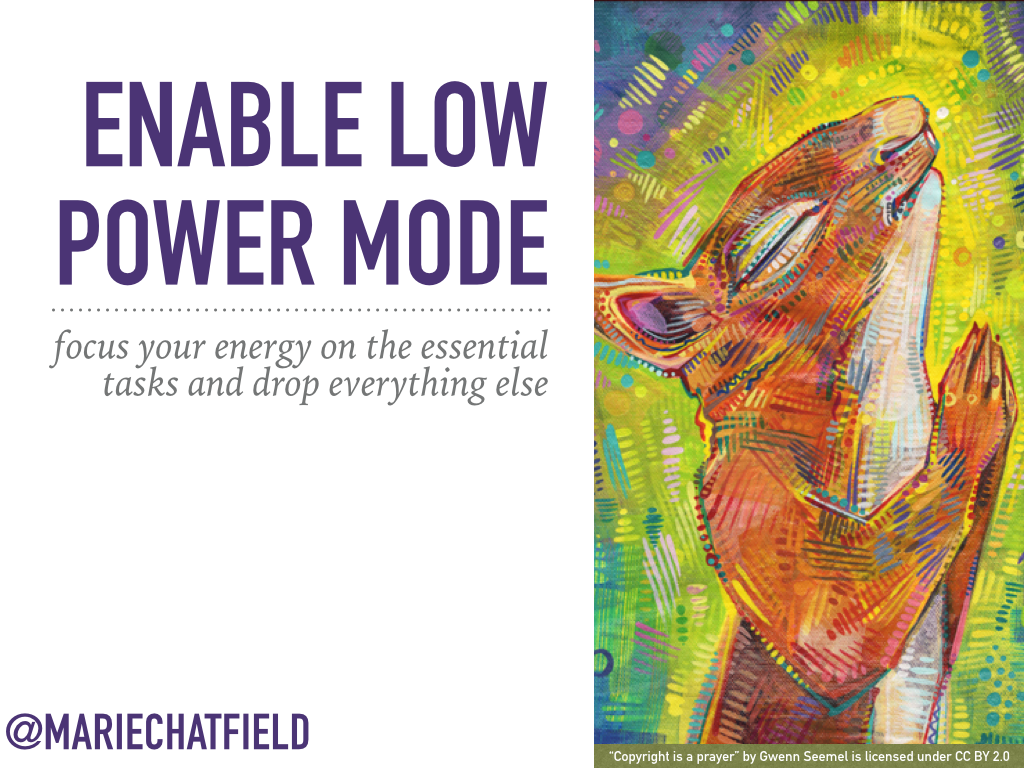
Enable Low Power Mode: focus your energy on the essential tasks and drop everything else. // Art Credit: “Copyright is a prayer” by Gwenn Seemel, licensed under CC BY 2.0
So what do I mean by low power mode? It’s this great setting on phones that recognizes that energy is valuable and limited. When low power mode is on, the phone stops using energy for background tasks or other non-essential work.
You can likewise enable low power mode in your own life by focusing your energy on the essential tasks, and dropping everything else. It’s especially helpful to enable low power mode when you’re running low on energy, but you can also hang out there forever, even if you have energy to spare.
Ruthlessly prioritize
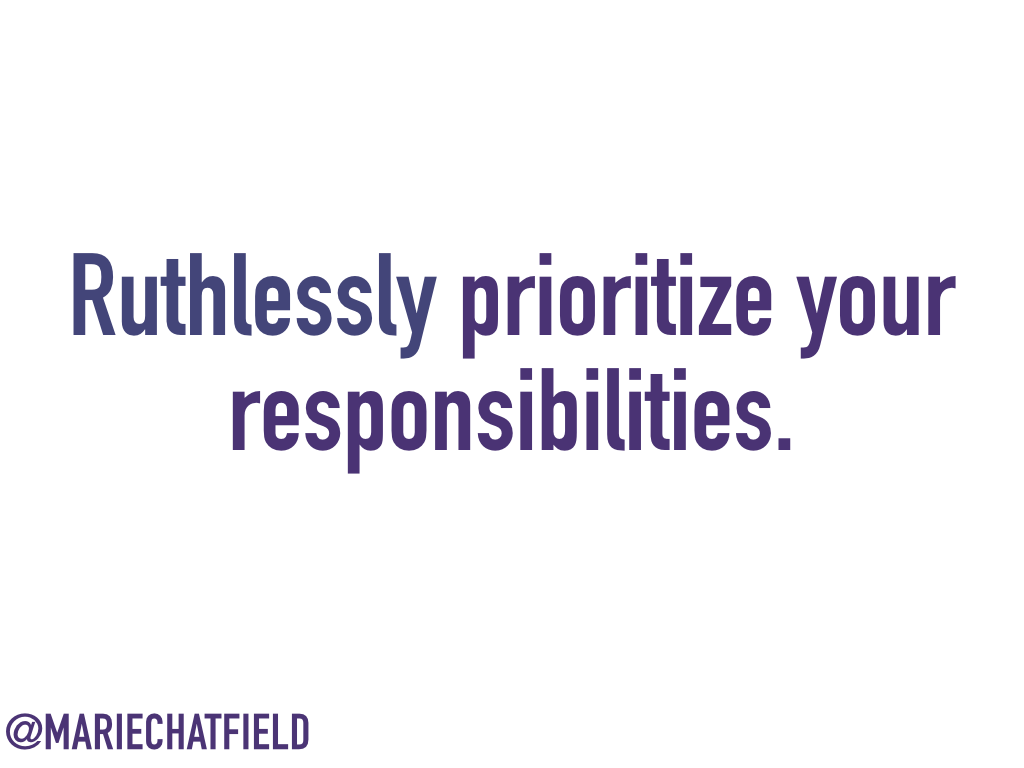
Ruthlessly prioritize your responsibilities.
The first step in enabling low power mode is ruthlessly prioritizing your responsibilities. There’s a lot of work that we want to get done in a day, work that we think is important and should be done, plus some other stuff that we really should do. The work will never stop, but we will.
So we should constantly communicate and negotiate with our managers and our teams or other stakeholders to determine what absolutely has to happen this week, or this sprint, or this quarter. When something new comes up that just has to be done, I have found it useful to ask “How should I prioritize this new work with regards to my existing work? What can I drop in order to get this done?” If the answer is that nothing can be dropped, that tells me that this new piece of work doesn’t have enough priority to make it onto my todo list.
Remove work notifications
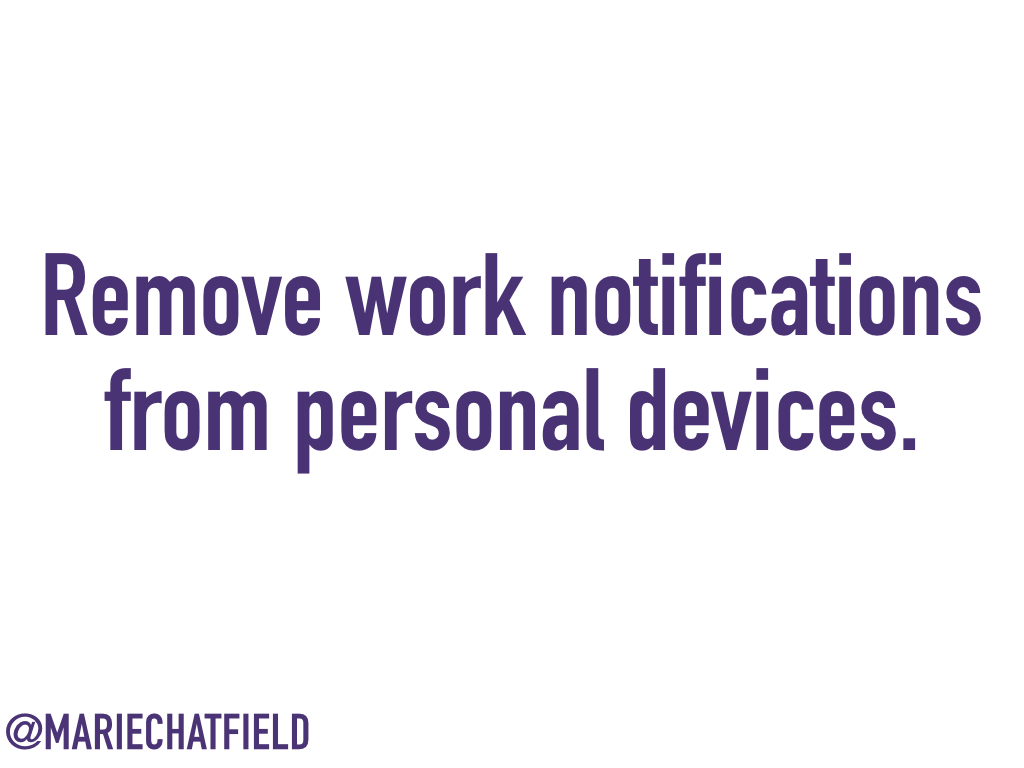
Remove work notifications from personal devices.
Remove work notifications from your personal devices. This one isn’t always practical, especially if you have an on call rotation or other times when you are expected to be highly available. So when you’re not in a highly-available period, I challenge you to remove all the work stuff from your phone or laptop.
I’ve personally found that I can handle having work email on my phone during the week, but it’s too distracting on the weekends. So I take turn off my work email on Friday afternoons, and turn it back on Monday morning.
Decrease involvement
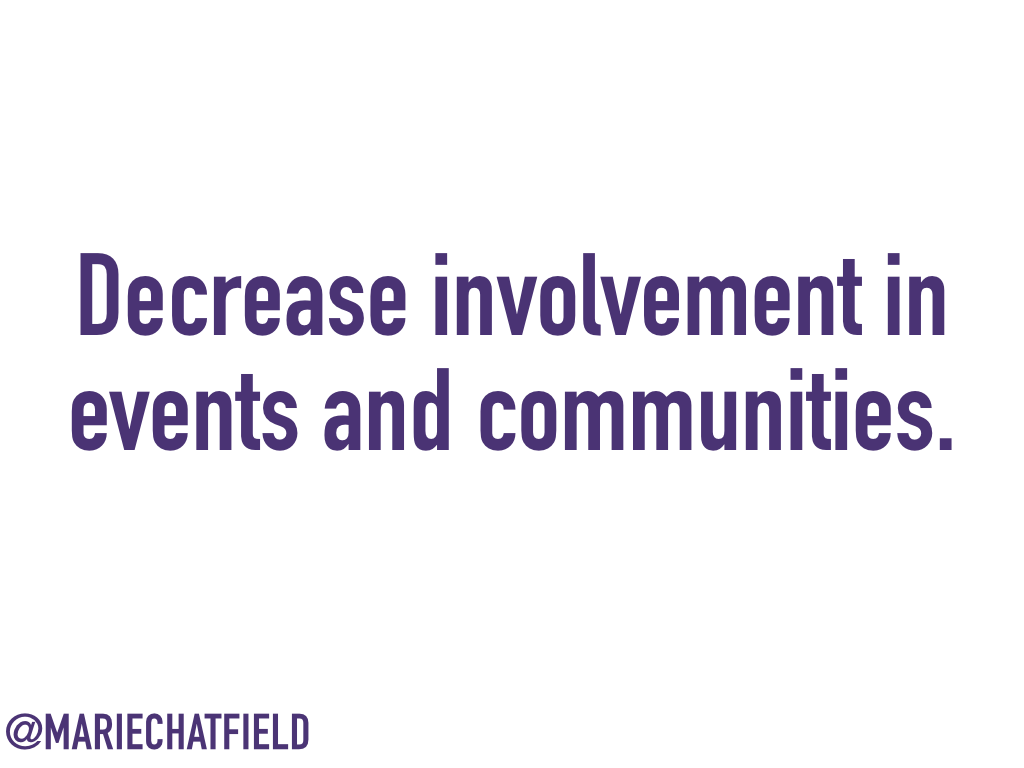
Decrease involvement in events and communities.
This was a step that I had to take when I looked around one day and realized that I was on the leadership teams for both our general Women at Square group and our Women in Engineering at Square group. It was a lot for me to handle all at once, and it also meant there was less opportunity for other people to grow in those leadership roles.
I was more invested and involved in the Women in Engineering group, so I decided to completely step down from the general Women group and stop going to those events for the time being. I wrapped up my leadership commitments to the Women in Engineering group, helped transfer my knowledge to the next round of the leadership team, and then enjoyed being a regular member who just shows up. Next quarter, I plan to help lead a smaller event for our Women in Engineering group that I’m passionate about. I feel like I have a bit more energy to spare now, and that’s where I’d like to focus my time.
There may be seasons in your life when you have extra energy and you can spend it on being involved in communities. But there may also be seasons when that’s not the best use of your energy.
This is important to know: if you are a member of an underrepresented group in tech, you are not obligated to show up, much less organize or lead, any event or community that is targeted for you. The only exception is if someone is literally paying you to be there.
If you have the energy to give back, that’s great — but if you don’t right now (or ever), that’s great too. You are here, and that is enough.
Say no to unpaid diversity work
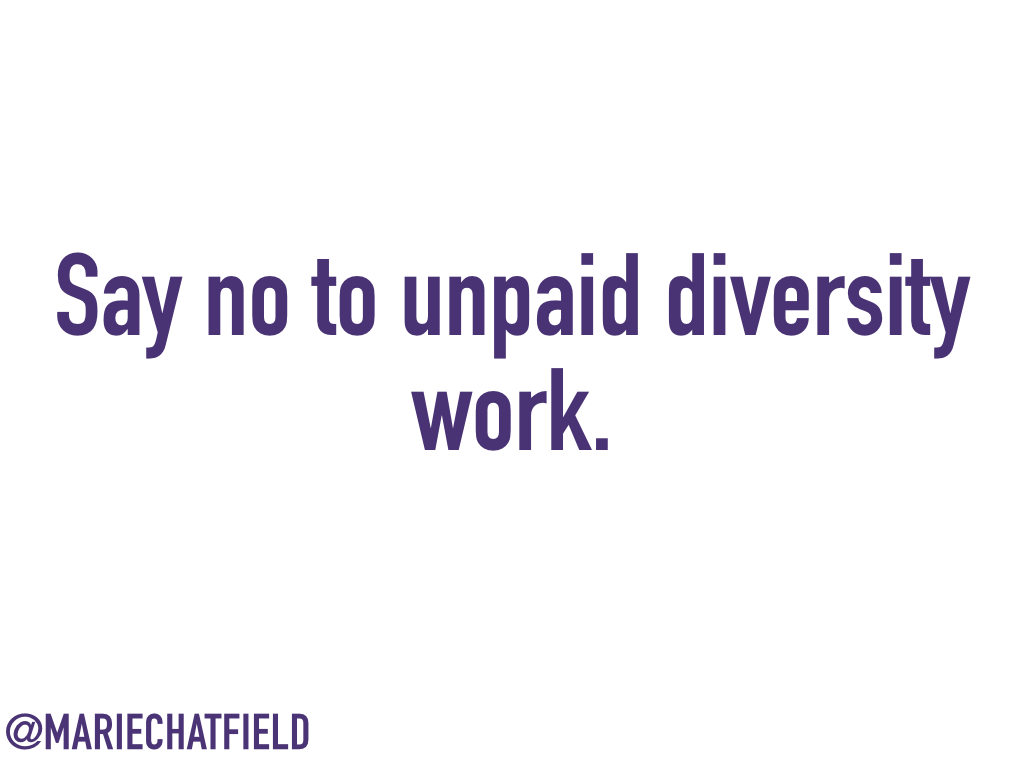
Say no to unpaid diversity work.
On a related note: just say no to unpaid diversity work. Note that there is a difference between deciding to volunteer your time for an organization or event that you have decided is meaningful to you, and being asked to contribute your work or time for free — particularly when the beneficiary or audience of your work is a company or a non-marginalized group.
Your time and your energy are worth more than that, and it is not your responsibility to be the face or voice of diversity for anyone.
Charge Your Batteries
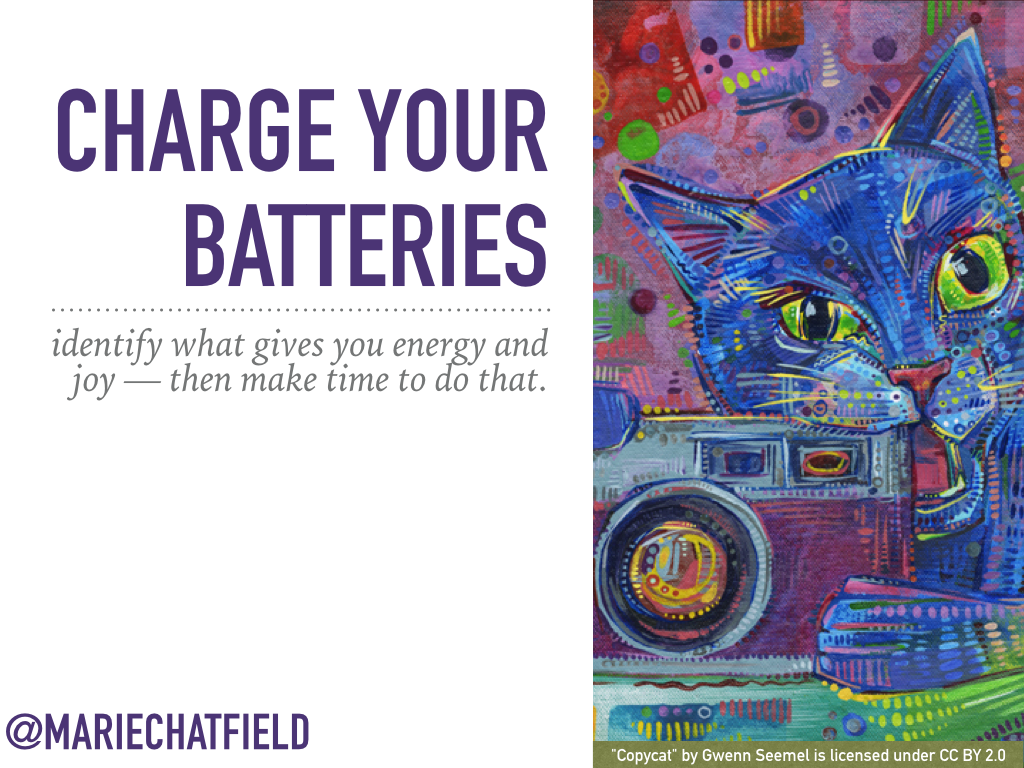
Charge Your Batteries: identify what gives you energy and joy — then make time to do that. // Art Credit: “Copycat” by Gwenn Seemel, licensed under CC BY 2.0
The next category of strategies is to charge your batteries. The same way that we charge our phones every night, we need to find ways to replenish our own energy during our daily lives. This means identifying what gives you energy and joy, and then making time to do on a regular basis.
Walk outside

Walk outside the office for lunch or coffee.
Walk outside the office for lunch or coffee. Stroll around the block, find a nearby park, or visit a local shop or restaurant. Just get outside and enjoy the fresh air!
When I’m feeling particularly tired during an afternoon and realize that I need a quick break, I love to walk to a coffee shop down the block from my office. I’ll usually invite my teammates to join me — at least one or two of them will tag along, even if they don’t want to buy anything. When we get back to the office, I always feel refreshed and ready to tackle the next piece of work.
Take regular screen breaks
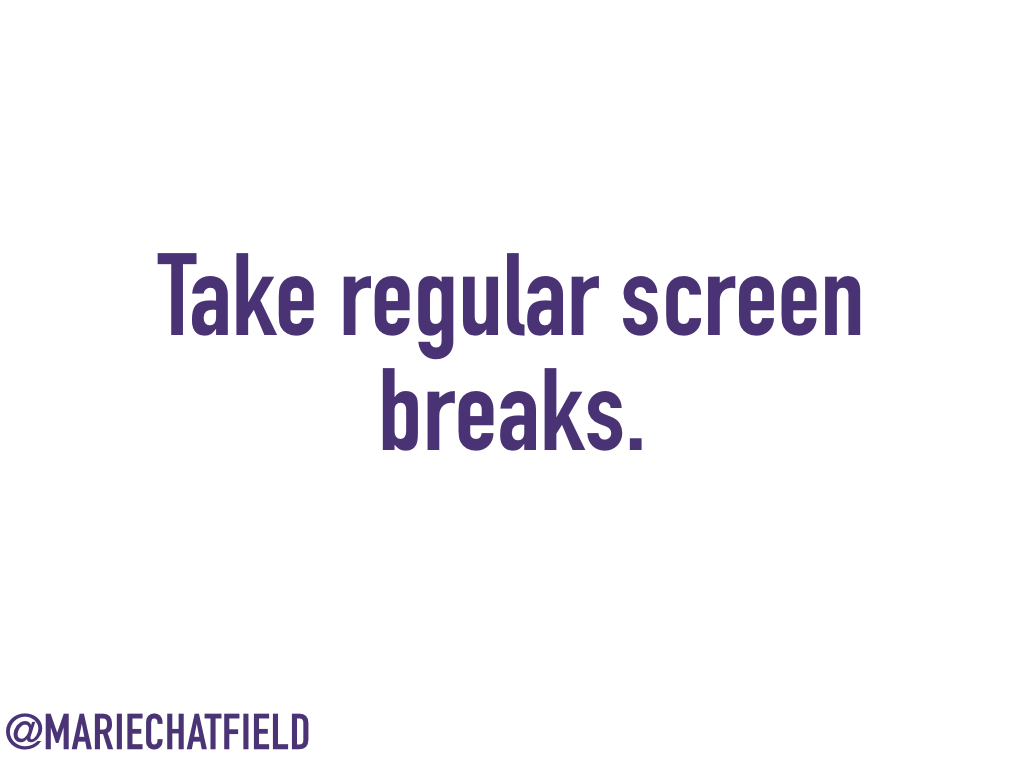
Take regular screen breaks.
Take regular screen breaks. Far too often, I’ve gotten up from my desk to go refill my water or grab a snack and have immediately switched from staring at the big screen of my monitor to the small screen of my phone. I would walk around the hallways of our office like a screen zombie for a few minutes, then go back to staring at my monitor for another hour. It’s no wonder my eyes and my brain would be exhausted by the end of the day!
Don’t be a screen zombie — try giving your eyes and your mind a break by leaving your phone at your desk and just resting for a few minutes as you walk around the office.
Time for creative outlets

Put time for creative outlets on your calendar.
Put time for creative outlets on your calendar. This is one of my favorite strategies — I love writing poetry, but left to my own devices, I hardly ever find the time to sit down and write. When I actually schedule an hour to go and write, and then stick to it, I always finish feeling energized after engaging my creative muscles.
I can’t encourage you enough to also pursue your own creative outlets. It can be so refreshing to create something completely unrelated to your day job, even if you never share the end result with anyone other than yourself.
Movement that gives you joy

Make time for movement that gives you joy.
Make time for movement that gives you joy. This may look different for everyone, depending on your ability, energy, strength, and interests. Maybe you swim or wander aimlessly around the neighborhood or dance Zumba or play on a wheelchair basketball team or do breathing exercises or restorative yoga, or maybe you do all of those things.
If there is some way that you move your body that fills you with joy and makes you feel better and gives you energy, do that thing — even if it means leaving work a little bit earlier or getting in a little bit later.
Power Down
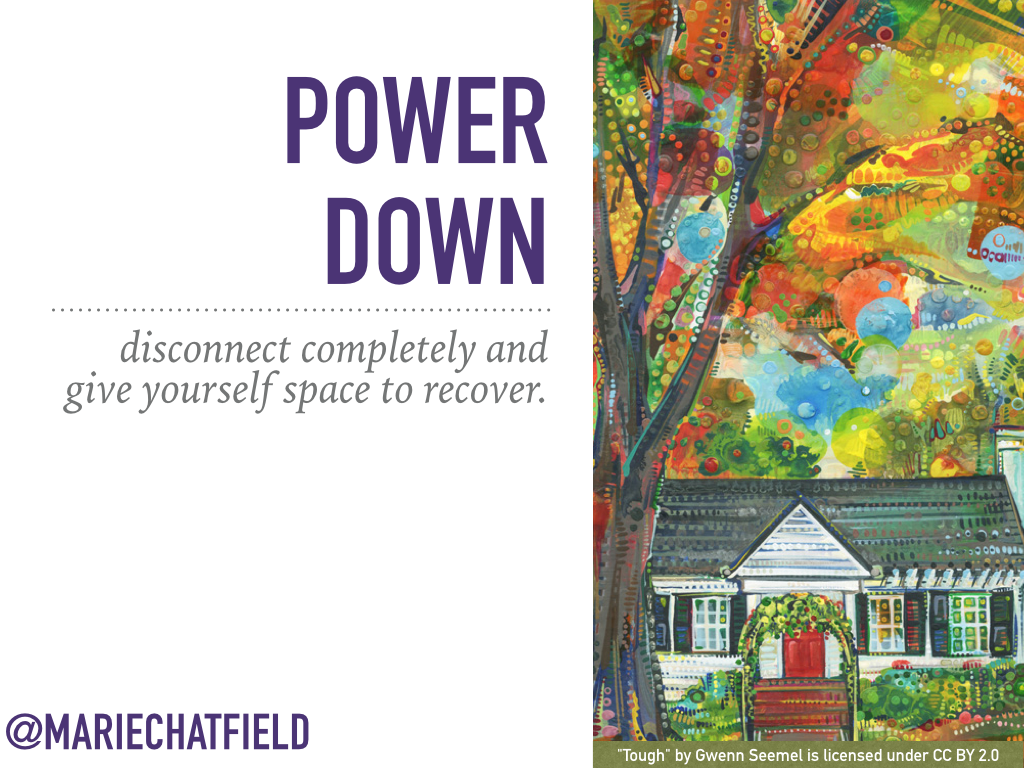
Power Down: disconnect completely and give yourself space to recover. // Art Credit: “Tough” by Gwenn Seemel, licensed under CC by 2.0
The last category of strategies for managing energy is to power down. In the words of the time-honored IT advice: “turn it off and back on again.”
Even more so than our phones, we need times to completely rest and reset. We can do this by disconnecting completely and giving yourself space to recover.
Leave work at work
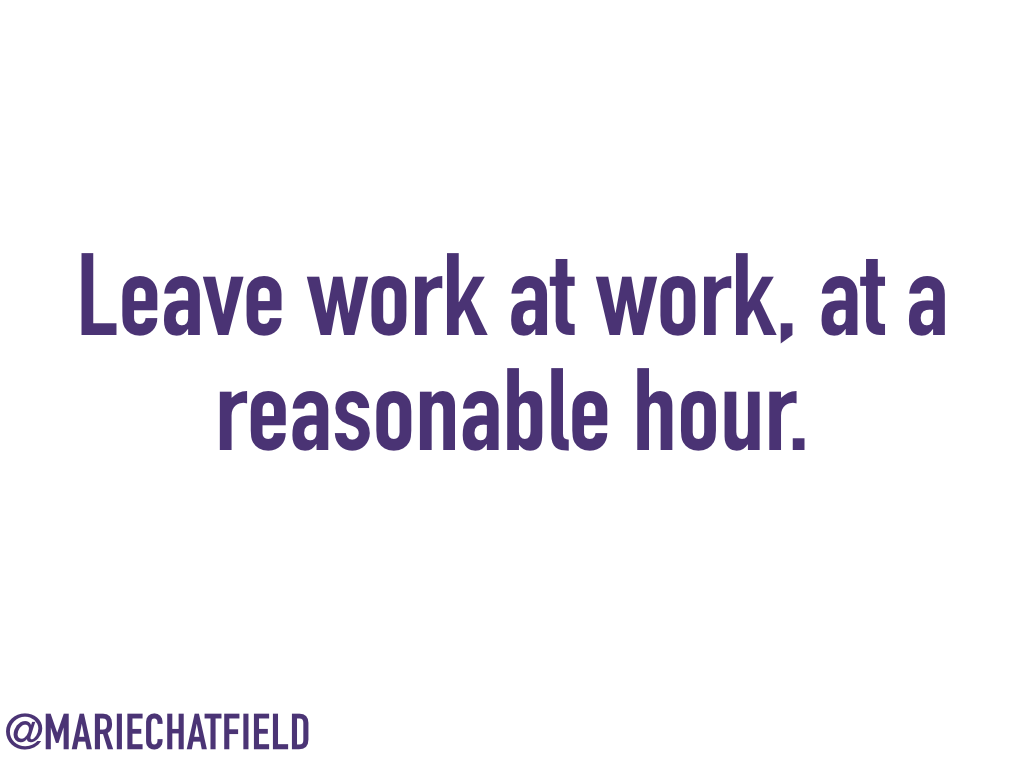
Leave work at work, at a reasonable hour.
Leave work at work, at a reasonable hour. It’s important to not arrive too early, or stay too late, too regularly. But it’s also important to not bring work home when it’s possible.
Make a commitment to yourself to not take work home just one day a week. If you feel comfortable doing that already, try two days or more!
Disrupt unhealthy thinking habits
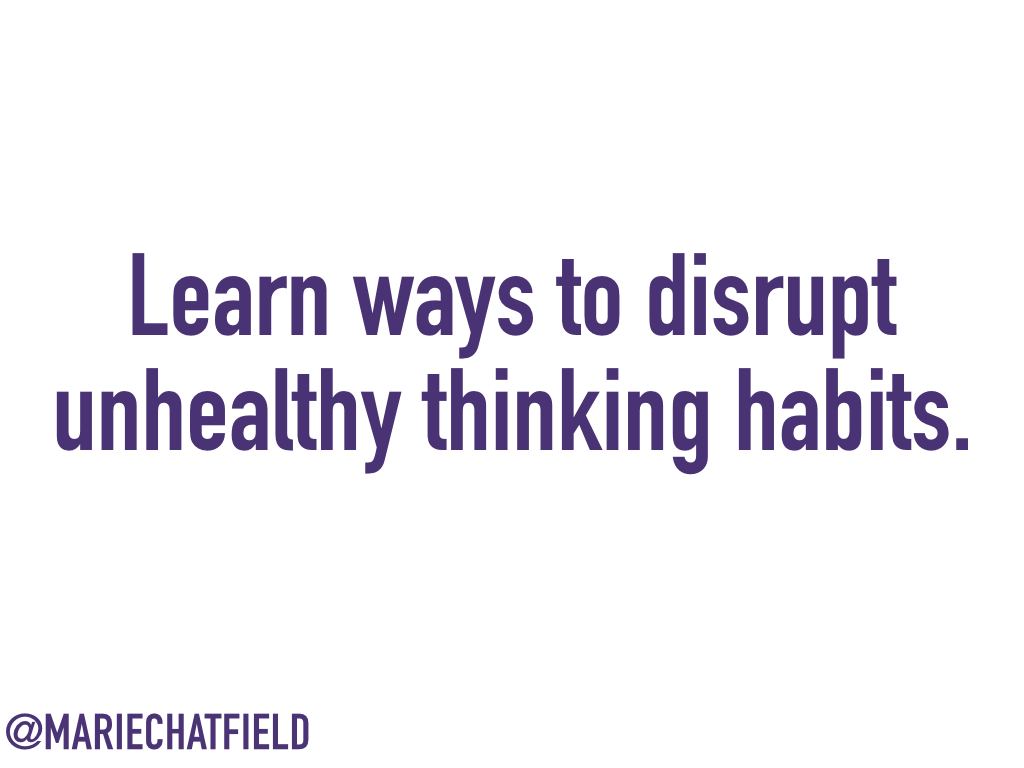
Learn ways to disrupt unhealthy thinking habits.
Learn ways to disrupt unhealthy thinking habits. When you realize that you’re thinking or stressing out about work, you’ll need a way to stop that train of thought. You may find that meditation, or visualization, or prayer, or singing silly songs at the top of your lungs works for you.
This is honestly something that I’m still working on. On rare occasions, I’ve actually been so completely entangled in trying to solve a tricky problem that I’ve found myself literally dreaming about different approaches. Once, I even came up with a solution while asleep — not necessarily a good solution, mind you, just a solution — then promptly woke up in the middle of the night because I was so excited about it. But how do you manage to go back to sleep after that? I tossed and turned and finally just turned on the light and read a book until my brain was able to calm down.
If you find that you’re constantly stressed or anxious about work, you may want to see a therapist or other mental health professional — which is something that I would honestly recommend for everyone at least once in your life.
Enjoy your sleep
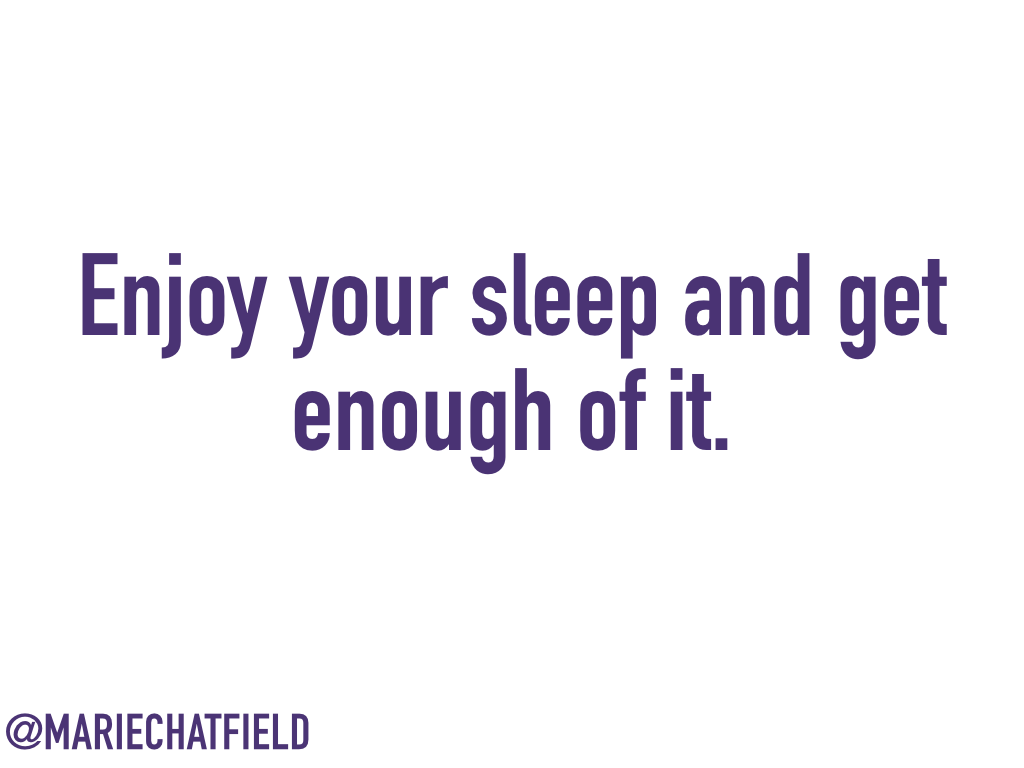
Enjoy your sleep and get enough of it.
Enjoy your sleep and get enough of it. This can be tough, especially if you have insomnia or small children or other circumstances that might disrupt your sleep. But to the extent that it’s reasonable for you, try to get some solid hours of uninterrupted sleep. If you realize that there are patterns in your life that are preventing you from resting, change them!
For example, I have realized that I sleep much better, and that the quality of the time directly before and after I sleep is much improved, when I leave my phone on the other side of the room from my bed at night. If my phone is within reach, I end up scrolling through Twitter before I sleep, and again when I first wake up, even before I’m fully functional.
When I’m oncall, I prefer to sleep with my phone on full volume next to my head so that I don’t miss a page or any other important notification in the night. The thing is, I rarely get paged at night — but I do have friends and familiar who live in earlier time zones than I do. Which means that the last time I was oncall, I was woken up at 6am every single morning for a straight week by texts from one of my best friends as she started going about her day. I eventually figured out a way to change my phone settings so that PagerDuty and my immediate family can contact me, but everyone else is silenced when I’m asleep and oncall.
Take vacation
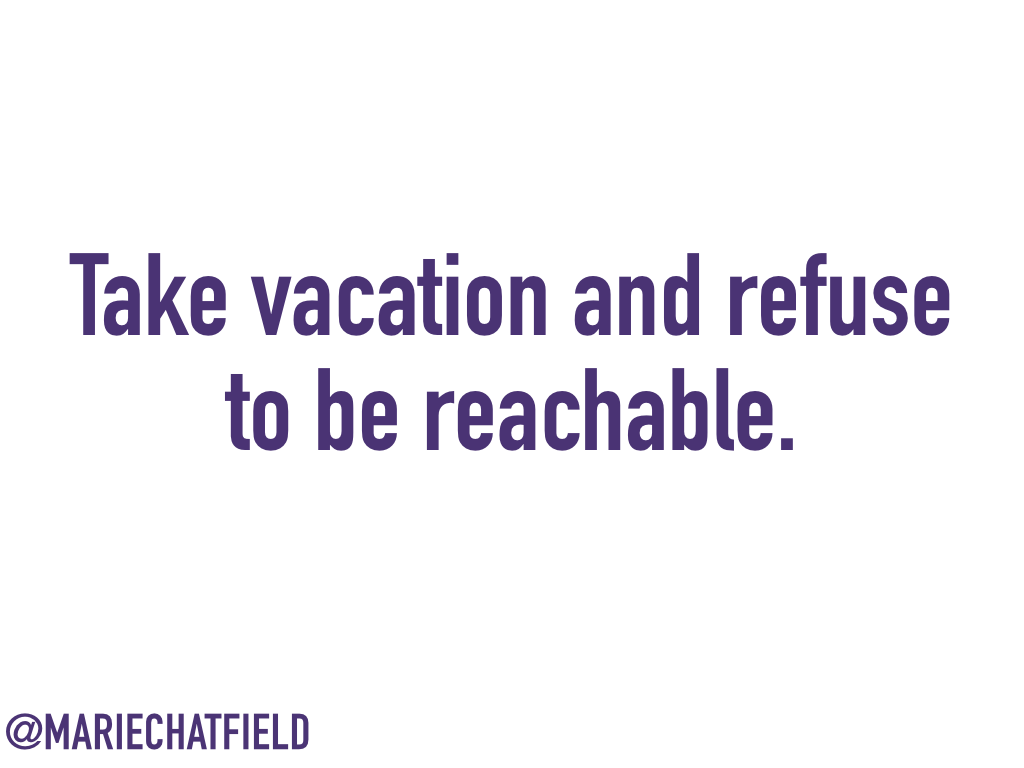
Take vacation and refuse to be reachable.
Finally, take vacation and refuse to be reachable. Don’t check email or messages or answer your phone while you’re out of the office, and don’t make promises to do so — that only perpetuates a culture of never being offline.
Cut the cord, and enjoy your time off. You work hard, and you need time to recover. This may be difficult especially if you work for a smaller company or run your own business, but you can start with taking a single day (or maybe just half a day) for self-care and see if you can work your way up from there.
Conclusion
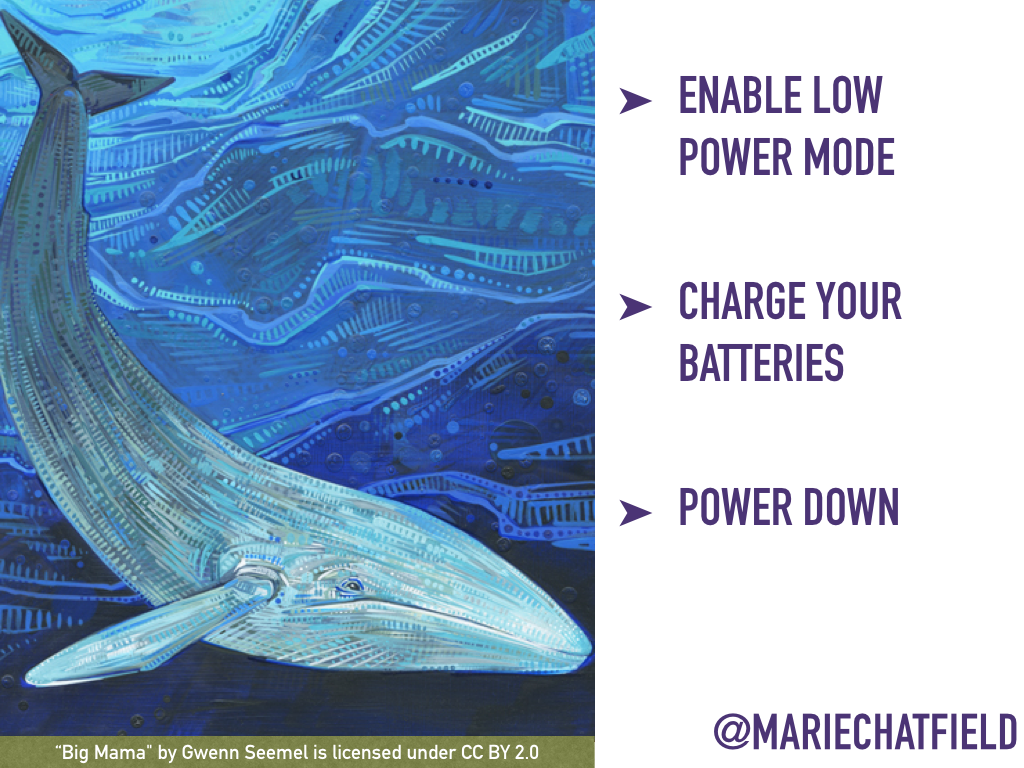
Enable low power mode, charge your batteries, power down. // Art Credit: “Big Mama” by Gwenn Seemel, licensed under CC BY 2.0
So now we’ve covered strategies for managing your energy that cover three main groups: enabling low power mode by focusing on essential tasks, charging your batteries by making time to do what you love, and powering down by disconnecting and giving yourself space to recover.
I would love to hear if any of these strategies help you, or if you have tactics of managing your own energy that I’ve missed. Please come find me after, or tweet me @mariechatfield.
I wish you all great rest and good energy for the rest of this weekend and beyond. Thank you!
The difference between Ember actions and DOM events and why it matters, plus a really rad flowchart.